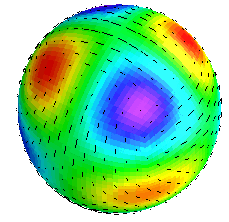 A representation of inflation on the timeline of the universe.
A representation of inflation on the timeline of the universe.
Inflation explains seeds the inhomogeneities by quantum fluctuation, which grows by gravitational instabilities and eventually form all structures we know today – galaxies and stars.
The Inflation theory links important ideas in modern physics, such as symmetry breaking and phase transitions, to cosmology. Inflation is a very good idea which explains away the shortcomings of the standard big bang model. Simple and elegant though it is, a concrete model within a fundamental framework has proved elusive till now.
